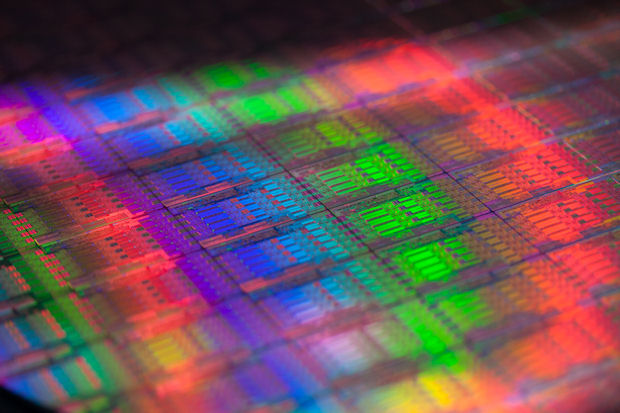Editor’s Pick: New Xeon Processors Accelerate Data Centers

A die shot of the Intel Xeon E5-2600 v3 processor. Image courtesy of Intel Corp.
Latest News
October 22, 2014
 Dear Desktop Engineering Reader:
Dear Desktop Engineering Reader:
 If you’re not an IT person, you might have scanned quickly over the news last month that something shook up how you’re going to be doing design, rendering, optimization, simulation and the like. IT people surely noticed. But for those of you who see the phrase “IT” and first think of Cousin Itt from “The Addams Family,” here’s what happened and what’s in it for you.
If you’re not an IT person, you might have scanned quickly over the news last month that something shook up how you’re going to be doing design, rendering, optimization, simulation and the like. IT people surely noticed. But for those of you who see the phrase “IT” and first think of Cousin Itt from “The Addams Family,” here’s what happened and what’s in it for you.
Intel released its new Intel Xeon processor E5-2600/1600 v3 product families. You may have heard rumors about the “Haswell” processor. This is the latest generation of Xeon processors. The nub of it from the end user point of view is that the Xeon E5-2600/1600 v3 should make your relationship with the data center a more productive experience.
How? You ask. Well, let’s start with this: The Xeon E5-2600/1600 v3 processors are engineered to handle the many different workload requirements and rapidly growing needs of data centers that serve as the infrastructure of an enterprise. Think things like the need for scalability to deliver services to users on demand, energy efficiency, the Internet of Things, total cost of ownership (TCO) and so forth.
The Xeon E5-2600/1600 v3 families offer an assortment of sensors and metrics for CPU, memory and I/O utilization that’ll enable your IT team to better monitor, manage and control system use. Essentially, what that means for your outfit is a more agile, efficient and responsive software-defined data center that helps your IT team deploy policy-driven automation to provide and manage resources optimally. For end users this all boils down to your applications and compute-intensive jobs should run faster and you’ll encounter fewer queuing delays.
With up to 18 cores per socket and 45MB of last-level cache, the Intel Xeon E5-2600 v3 family delivers up to 50% more cores and cache compared to the previous processor generation. It also has an extension to something called Intel Advanced Vector Extensions 2 (Intel AVX2). This extension doubles the width of vector integer instructions to 256 bits per clock cycle for integer-sensitive workloads and, according to Intel, delivers up to 1.9 times higher performance compared to earlier generations. Translation: Many of your math calculations should execute quicker.
Performance overall should be better too. A video link in today’s Pick of the Week write-up shows you that a server with the new Intel Xeon E5-2600 v3 processor can be up to six times faster running data center workloads than a four-year old server. The Xeon E5-2600/1600 v3 processors also provide more virtualization density than their precursors, allowing support for up to 70% more virtual machines per server. Looking at that another way, a single server based on an Intel Xeon E5-2600 v3 processor can take the place of three older servers.
For the end user, the Intel Xeon E5-2600/1600 v3 processor families will mean more access and better performance. Your way of working with that HPC (high-performance computing) cluster could potentially change as much as it did that time when you went from a single CPU 4GB workstation to a multicore 128GB workstation.
You can learn more about the Intel Xeon E5-2600/1600 v3 processor families from today’s Pick of the Week write-up. You’ll find lots of links that break down the potential of this processor family to digestible form for both the IT department and end users. Make sure to take in the video on “Delivering on the Promise of Personalized Medicine” for the wow factor. This Intel introduction is going to make for some interesting times for engineers across all sorts of disciplines.
Thanks, Pal. — Lockwood
Anthony J. Lockwood
Editor at Large, Desktop Engineering
Read today’s pick of the week write-up.
This is sponsored content. Click here to see how it works.
Subscribe to our FREE magazine, FREE email newsletters or both!
Latest News
About the Author
Anthony J. Lockwood is Digital Engineering’s founding editor. He is now retired. Contact him via [email protected].
Follow DE





